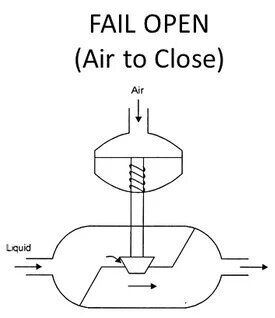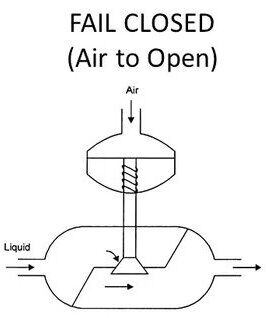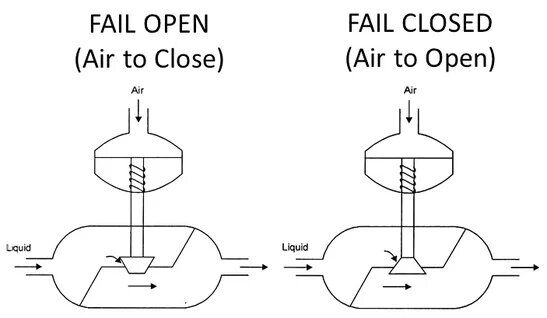Managing Air Supply Challenges in Pneumatic Control Valves
On this page
Pneumatic control valves are essential in various industrial sectors, including chemical, petroleum, and pharmaceutical industries. Using compressed air as a driving force, these valves regulate fluid flow and pressure by adjusting the valve opening, ensuring stable and safe operations. This article explores the working principles of pneumatic control valves, focusing on the operational modes of air-to-close (fail-open) and air-to-open (fail-close) valves and their practical performance. Additionally, it examines the impact of air supply failures on these valves, helping readers understand and address potential operational challenges.
Air-to-close control valves, commonly used in chemical plants, operate by decreasing the valve opening as the input air pressure increases, and increasing the valve opening as the input air pressure decreases. In the absence of air supply, the valve remains fully open, a design intended to ensure maximum flow during an air supply failure to maintain process safety. For example, during an emergency shutdown, an air-to-close control valve can quickly expel fluid from the system, preventing dangerous overpressure situations.

Conversely, air-to-open control valves work oppositely to air-to-close valves. When the air supply is lost, these valves shut completely, ensuring system safety. Air-to-open valves are typically used in scenarios where stopping fluid flow during an air supply failure is critical. For instance, in processes requiring leakage or contamination prevention, an air-to-open control valve can immediately close upon air supply failure, preventing the release of hazardous substances.

The most straightforward way to distinguish between air-to-close and air-to-open control valves is by observing the position of the valve actuator: valves with air input above the diaphragm are generally air-to-close, while those with air input below are typically air-to-open. Air-to-close valves are more commonly used.
The proper functioning of control valves relies on a standard air supply pressure (usually 2.5 kPa). Deviations from this standard, either too high or too low, can hinder valve operation, affecting process stability and safety. Below is a detailed analysis of common air supply issues and their impacts.
Direct-acting air-to-close valves: Excessive air pressure can prevent these valves from opening or reaching their upper limit, potentially causing system overload or ineffective flow control.
Direct-acting air-to-open valves: High air pressure can lead to incomplete closure or inability to reach set values, causing fluid leakage or inaccurate flow control.
Reverse-acting valves: The impacts are opposite; excessive air pressure can prevent reverse-acting air-to-close valves from closing and reverse-acting air-to-open valves from opening.
Direct-acting air-to-close valves: Low air pressure can result in incomplete closure or failure to reach set values, hindering effective flow control.
Direct-acting air-to-open valves: Low air pressure can prevent these valves from opening or reaching their upper limit, affecting normal regulation.
When setting the valve positioner, adjusting the air supply pressure to the standard value is essential. If the instrument indicates high or low pressure, adjustments are necessary to eliminate faults. Regular inspection and maintenance of air supply pressure can effectively prevent control valve malfunctions, ensuring proper operation.
If the air supply is completely cut off for any reason, the control valve will either be at its zero or maximum position, failing to regulate normally. During maintenance, manually cutting off the air supply can help determine whether the fault is mechanical or related to air or electrical signals. This method allows for quick fault identification and effective troubleshooting.
Understanding the working principles of pneumatic control valves and their dependence on air supply is vital for their industrial application. Recognizing the different operational mechanisms of air-to-close and air-to-open valves and the impact of air supply anomalies or failures on their performance is crucial for ensuring production safety and enhancing process reliability. By regularly inspecting and maintaining air supply pressure and mastering control valve fault diagnosis and troubleshooting methods, potential operational issues can be effectively prevented and addressed, ensuring smooth industrial production.

